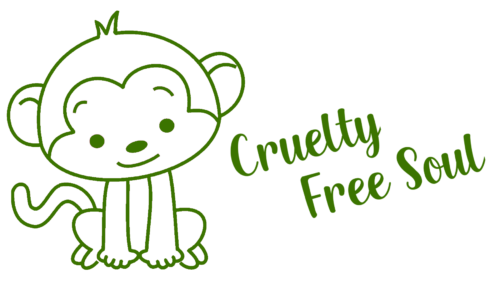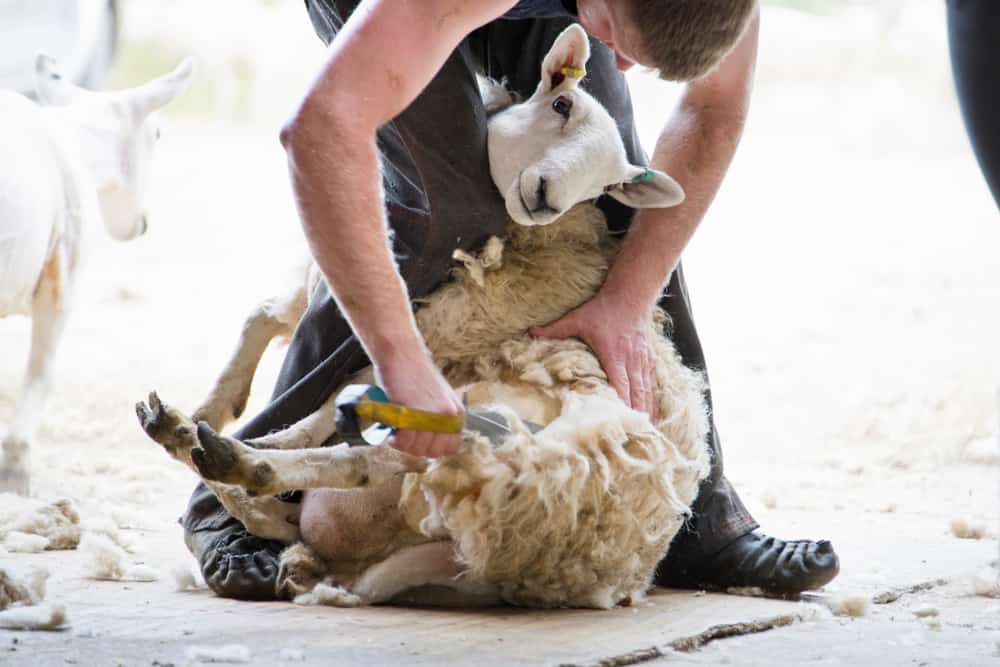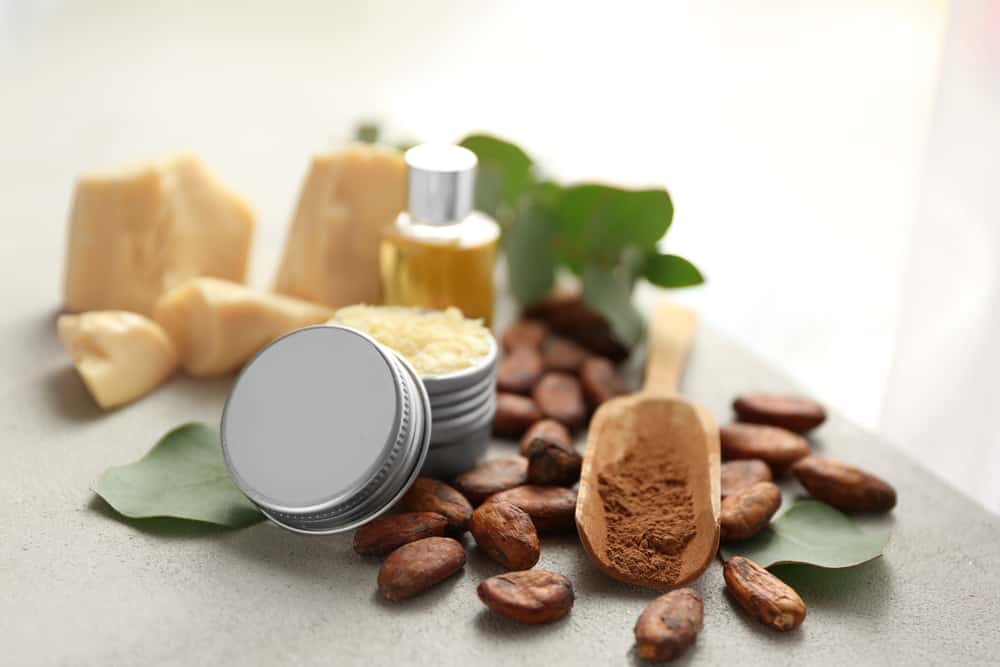Lanolin is a deeply moisturizing oil found in many beauty products and medicines. But since sheep make it – is it cruelty-free or even ethical to harvest and use it for ourselves? Here are some surprising facts.
Lanolin is a natural byproduct of sheep's wool. It can be cruelty-free depending on how the sheep are treated during their lives and throughout the shearing process. Mass-produced lanolin is never cruelty-free.
Lanolin is one of the most potent natural moisturizers available, holding up to 400% of its moisture weight.
This natural ingredient has been used as far back as doctors in 90 A.D. And in the 80s, it was registered as an essential modern pharmaceutical.
But are people starting to get greedy and exploit sheep to curate this magic material? And could we consider this a sustainable ingredient in the long run?
Can Lanolin Be Cruelty-Free?
Lanolin can be cruelty-free as long it's collected without harming or negatively affecting the sheep.
Lanolin is predominantly collected from domestic sheep that are raised for wool. Just one Merino sheep's wool can make up to 300ml of wool wax/fat.
It’s also good to know that sheep shearing is not a cruel process either; it's necessary for the animal's wellbeing and lifespan. Here's why: Is Sheep Shearing Cruel?
The largest factor in creating cruelty-free lanolin is in how the sheep are reared from birth and how ethically they are treated.
Where Does Lanolin Come From?
Lanolin is a type of oil referred to as "wool fat" because it comes from a sheep's oil-producing glands under its skin. These glands help lubricate the hair as it grows.
This 'wool fat' does not come from a sheep's body fat. It is a natural set of oils produced under their skin and released into their woolly coats.
There are three types of lanolin:
It's important to know that lanolin is a byproduct of the wool industry, this means it is harvested from sheep raised for wool.
Lanolin is only extracted once the sheep are sheared. So you actually need to know how a wool farmer treats its sheep for you to understand whether that lanolin is cruelty-free or not.
What Is Lanolin Used For?
Lanolin is a natural emollient, meaning that it can successfully protect, repair, and maintain the health of your skin barrier.
It is so potent that it can reduce the amount of water your skin loses every day by up to thirty percent.
Even though this product is for topical use only, the lanolin soaks into the skin under the surface and creates a protective shield between your body's natural moisture and the dry skin on the surface.
It has long-lasting effects on your actual skin's health which synthetic products can't match and retrains your skin to moisturize itself from the inside out.
Some other reasons lanolin is a great moisturizer include that it’s:
The most common cosmetic products that use lanolin include:
When is Lanolin Production Cruel?
Since the natural product market is growing exponentially – lanolin's popularity has soared too. It's predicted to be worth over USD 450 million by 2024.
The problem is that people usually sacrifice an animal's wellbeing to increase production – and this has happened in the lanolin market too.
Lanolin itself is a byproduct of the wool industry and is only harvested after a sheep has been sheared for its wool.
This means that sheep are not affected at all by the lanolin extraction process. They are only affected by the way they are reared and how safely their wool is sheared every season.
So when we look at how lanolin can be cruel – we’re actually considering how poorly the wool sheep are treated throughout their lives in general.
Here are some common cruelty issues that sheep face:
Mulesing Causes Trauma and Higher Mortality Rates
Mulesing is a technique used to reduce flystrike in sheep. Flystrike is an infection caused by blowflies that lay their eggs on the sheep – selecting areas where the skin wrinkles and collects feces and urine.
The painful and traumatic mulesing process involves stripping the skin around the backside of 2-10 week old lambs so that no hair, feces, or urine can collect there.
It's often combined with tail docking – neither procedure uses any anesthesia or pain relief afterward.
This process puts the lambs in such a state of shock and pain that it decreases their mobility and increases weight gain, so they have a higher mortality rate.
Mulesing is banned in most countries globally, but not in Australia, where we source about 75% of our wool globally.
Although many Australian sheep farmers do not use this technique anymore – it still needs to stop altogether!
Factory Farming Deprives Sheep of Humane Living Conditions
Factory farms are cruel to animals as they do not adhere to Humane Society's criteria that defines animal cruelty.
These criteria range from malicious to neglectful behavior that hurts or kills animals and deprives them of basic needs such as shelter, veterinary care, water, and food.
Although most factory-farmed animals are reared for meat production, domestic sheep that are raised for wool can still be subjected to several factory-farm living conditions. These include:
If you're interested in learning more about factory farming and where your meat comes from, you need to read this: Are Factory Farms Cruel to Animals?
Farmers Eventually Kill The Sheep for the Meat Industry
It is uncommon and illogical for a sheep to be killed for lanolin production because it is a byproduct of the wool industry.
This substance is purely collected from sheep after their wool is sheared.
It's extracted through a unique process of cleaning and combing the wool with a special detergent used to eliminate all dirt and bacteria.
However, as sheep age and their wool production gets thinner, they are usually sent to slaughter for meat production.
This process is a double-edged sword. On the one hand, it makes full use of the animal so that nothing goes to waste.
On the other hand, it's particularly cruel to think about these animals living in inhumane conditions before being sent to inevitable death by slaughter.
Is Lanolin Ethical and Sustainable?
Lanolin is a completely natural byproduct of wool production.
It's also considered a highly sustainable natural resource, much like honey, because it is:Lanolin is also 100% biodegradable and non-toxic – making it very eco-friendly. Hardly any environmental damage is caused by producing, harvesting, using, and discarding the product.
Bicycle lubrication is an excellent example of how lanolin has been used as a sustainable alternative.
Most bike lubricants are made from harsh chemicals like petroleum distillates or Teflon that are highly toxic and accumulate in our environment.
Lanolin is a safe and effective alternative lubricant that prevents pollution.
Ethically Sourced Lanolin
The stance you take on ethically sourced lanolin (and wool) depends on how you feel about sheep rearing.
While it's necessary to shear sheep in today's world – that hasn't always been the case.
Sheep used to shed their winter coats before we started to domesticate various breeds. Today, most domestic sheep need to be sheared their health.
If you believe that this human evolutionary interference is unethical – lanolin is not for you.
However, domestic sheep can be treated well and sheared with minimal discomfort within humane farms – meaning lanolin can be an ethically-sourced natural ingredient.
And luckily, it's become increasingly popular to source anything you buy responsibly that more farmers are practicing humane sheep rearing.
How to Find Ethically Sourced Lanolin
Unfortunately, it's not always easy to source cruelty-free lanolin because there are very few global welfare regulations for its production.
But given it is closely linked to the wool industry, you can check it against certain things.
Lanolin Vegan Alternatives
Lanolin is not vegan as it's an animal byproduct. It can be considered vegetarian, depending on whether or not the sheep were slaughtered.
Either way – it's ideal to look at some plant-based alternatives that can provide the same incredible results.
You may also want to look for some alternatives if you're someone that does suffer from lanolin-based skin allergies. Here's what we suggest.
Plant and seed oils
Provide an excellent source of healthy fatty acids that our skin needs to protect itself and can be rapidly absorbed when applied.
Plant and seed butters
The biggest difference between butter and oils is that butter is solid at room temperature but works in the same way.
Overall, lanolin is proven to be the most natural and supportive product for your skin.
This product comes directly from the wool of a sheep. The fact that it is entirely natural encourages your skin to self-regulate its own moisturizing properties.
Factors like age, environment, and lifestyle habits can all affect our skin's natural protective barriers, and we end up not producing the natural moisture we need.
Researching what product is best for you and your skin is especially important.
Different people have different allergies and sensitivities. Because of this, it is vital to try out various products in small portions to test the effect that they will have on your skin.
Final Thoughts
Lanolin is an incredible natural resource that's renewable, sustainable, and eco-friendly.
It's highly prized in cosmetics because of how it mimics human skin's essential oils and promotes your skin's natural ability to regulate its own moisture and hydration levels.
It's a gentle product that can be used on various skin types and even as a medicinal ointment.
However, its uses extend far beyond beauty and health – it's also used as an industrial lubricant and even to cure leather.
Lanolin can be cruelty-free if it is sourced from domestic sheep that are treated humanely, provided the five freedoms, and sheared gently.
Unfortunately, it's common to find unethically sourced lanolin that has come from:
The best thing to do is to look for products that are open about where they source their lanolin from and the ethical standards that that farm follows.
You can easily compare any farm's practices to the Ethical Wool Standard guidelines as an ethical point of reference.
Luckily, if you are vegan or cannot use lanolin, there are various plant-based alternatives you can use that are equally effective and packed with many healthy fatty acids that your skin needs.


